- Home
- Jerold Last
The Ambivalent Corpse (Roger and Suzanne South American Mystery Series Book 1) Page 2
The Ambivalent Corpse (Roger and Suzanne South American Mystery Series Book 1) Read online
Page 2
Dodging large numbers of students, mostly young ladies, we found the staircase. The wide stone stairs led us to the second floor and the office and laboratory of Professora Colletti, one of Suzanne’s potential future collaborators that she was to meet. Patricia Colletti was dark, in her mid-40s, short, thin, and attractive. She greeted us warmly when we introduced ourselves. Suzanne gave her some biochemistry textbooks and home grown pomegranates she had carried from Los Angeles as gifts. A few meters from Patricia Colletti's small crowded laboratory was her small crowded office where several students and coffee were waiting. The students were all young women in the 20s, all were small and thin, and most were named Maria. In fact, as I learned on this trip, a surprisingly high percentage of the women in Uruguay are named Maria. Multiple Marias can be differentiated from one another by using their middle names, either alone (for example, Elena) or as a compound name like Maria-Elena. I don’t remember much else about any of them. Instant coffee was served in very small cups and loaded with sugar, far too sweet for my taste.
Discussion focused on the research being done in Suzanne’s laboratory and about the corresponding work in the Colletti lab. I could understand enough Spanish to realize that there was a good deal of conceptual overlap, but everything was being done at a much higher level of technology in Suzanne’s lab thanks to the expensive equipment available at UCLA. By now, it was close to 3 o’clock. Suzanne reminded me that we had an important date with Detective Gonzalez at the police station and apologized for having to leave. The discussion would resume at dinner that night with Professora Colletti and several of the other faculty in her department.
Chapter2.The Rest of the Day
According to our map we were some distance from the Intendencia, or City Hall Building, that housed the police station. A taxi picked us up in front of the Palacio Legislativo getting us to the Intendencia building about 10 minutes later. We found our way to Detective Gonzalez’s office and knocked.
“It’s open. Come in,” Columbo said in pretty good English.
Except for his trench coat, Columbo looked much the same as he did this morning at the Rambla where we found the body. He pointed to two uncomfortable looking chairs that had been pulled in front of his desk and gestured for us to sit in them. His overall manner was entirely different from the morning. The tough cop questioning two possible murder suspects persona had disappeared; in its place was a charming policeman who wanted something from us. This version of Lieutenant Gonzalez was almost treating us as colleagues and came across as a good deal more likable.
“I’ve taken the liberty of having your answers from this morning typed up in English and Spanish. Please read your statements carefully and sign them if you agree that the statements are accurate. I'll have some more questions, then you're free to go.”
He passed us the statements, which were short and to the point. Suzanne and I had just arrived in Montevideo from the USA the previous day and we had never been in Uruguay before yesterday. The two of us were running on the Rambla in the early morning. We found the body, didn't touch anything at the crime scene, called the police immediately, and waited until the police arrived. Our statements swore that we did not know the victim and that we knew nothing else about the crime. After signing our statements we handed them back to the lieutenant.
“Thank you,” he said formally. “I have a few more questions I'd like to ask that don’t need to be part of the official statement. Is that all right with both of you?”
“Yes,” we replied.
“First,” he said in a questioning tone, “This morning at the Rambla was a horrible crime scene and a horrible crime. It surprised me how calm you both were and how professionally you answered my questions. I wonder whether there might be a reason for this. Do either of you work in law enforcement in the United States?”
“I’ve seen more than my share of dead bodies before. I was a policeman in Los Angeles, and worked as a homicide detective for several years before leaving the police force a few years ago to become a private detective,” I answered.
“And I’m a scientist,” replied Suzanne. “I’ve taken classes in anatomy and seen dead bodies and body parts before.”
I got really excited thinking about this case. I lusted after being part of it, which was juicier than anything I'd done in the last few years. I definitely wanted in on this one. How could I tell that to Columbo?
“Why did you leave your job as a homicide investigator,” Gonzalez asked me politely.
“The part I enjoyed was solving crimes. The parts I didn’t enjoy were the continuous paperwork and the politics required to advance in rank. I especially didn’t like the constant procedural rules that make it difficult to do the job.”
“Were you successful as an investigator?”
“As a matter of fact, yes. I was one of the youngest officers to be promoted to the rank of detective, and my clearance rate for homicides was the highest in the department.”
“It’s an interesting coincidence that you have expertise in homicide investigation,” said the Lieutenant pensively. “What are your plans for the remainder of your visit to South America?”
“Suzanne will be giving a couple of lectures at the university, so she'll be there all day tomorrow. I’ll have to entertain myself. We have dinner scheduled with a group of professors tonight, and perhaps also tomorrow night. Our plans include just being tourists here in Montevideo for a day or two. Then we want to visit BA, Iguazu Falls, Paraguay, and rural Uruguay. Our plans are very flexible after Suzanne’s work at the university is completed.”
“The Intendencia police know a little bit more than we did this morning about the murder you witnessed. It’s very complicated and very political. Are you willing to promise that everything we talk about from here on will be confidential? If so, I want to ask for your help,” said Columbo pleasantly.
“That’s OK with me, and I think I can also speak for Suzanne,” I replied. All of a sudden, this vacation was starting to sound like it could be as much fun for me as it was for Suzanne.
Suzanne nodded her agreement. She was quite obviously aware of what I was thinking and giving me her full approval.
The Lieutenant looked directly at both of us and started to speak. “The water in the victim’s clothes was almost certainly from the Rio de la Plata, so at some point she was in the river. The cause of death still has not been determined officially. There were no overt signs of lethal trauma-no gunshot wounds, no stabbing wounds, no blunt force to the head. There were bruises on the torso consistent with her being punched hard by a strong assailant. There was also some bruising on the throat consistent with choking, but not severe enough to damage the cartilage or kill. The dismemberment was post-mortem, with a very sharp instrument like a thin machete or a bone saw. All of the body parts were removed very cleanly, so the person who did it must have been very, very strong or used some kind of powerful tool to be able to cut through bones so neatly. Even though we ran her fingerprints through the criminal records in Uruguay and Argentina we haven’t been able to identify the victim yet. Nothing has come up. Copies of the fingerprints were sent to Interpol in Europe and to the U.S. FBI with a request that they search their databases. In my experience we usually can’t expect a reply from either agency for at least a week or two.
“Our forensic pathologist looked carefully at the victim’s dental work. He's prepared to swear under oath that she did not have that dental work performed in Uruguay or Argentina. She must be from somewhere else. He's less positive about where the dental work was done, but thinks it might have been Paraguay. Our murder victim is quite likely to be a foreign national, which can make the entire investigation very complicated and very political,” Columbo continued.
“On the other hand you two can come and go as private citizens and tourists wherever the evidence leads, and can investigate this crime without being tied up in red tape. Will you help me? If so I will share whatever information we have with you. We can’t afford t
o pay you for doing this, but I’ll be most grateful and can promise you an interesting vacation.”
Suzanne nodded and said, “This sounds like an interesting way to spend our vacation. If it’s OK with you, Roger, it’s OK with me. And, it’ll give you something useful to do while I’m working.” While she was saying all this, her body language was saying "great idea."
“Count me in as a volunteer,” I added.
The Lieutenant went on, “Let me tell you a little bit about Uruguay’s history to put things into perspective, then share my present theory before I ask you to do something dangerous that might help solve this crime. In the years leading up to and during World War II Uruguay was officially neutral, and tried quite hard to be a responsible neutral country in reality. The German heavy cruiser Graf Spee was scuttled offshore because Uruguay refused to allow it sanctuary at the end of 1939 as a ship of war while it was being repaired after the Battle of the River Plate. Towards the end of the war we accepted refugees from Germany from both the Nazi concentration camps and from the Nazi army and political apparatus as immigrants. There was quite a large Jewish population in Buenos Aires and Montevideo in the 1940s and 1950s, the descendants of whom have mostly moved to Israel since then. There were also flourishing Argentine and Uruguayan Nazi parties who were quite strong at that time and on through the military dictatorships of the 1960s and 1970s. The far right, fascists, Nazis, and skinheads are a very small minority in Uruguay now, but are making some political advances because of our recurring poor economy.
“Looking at the crime scene I see a carefully composed tableau that is meant to tell somebody something. There must be a logical connection between where the body parts were placed and the intended message from the killers. I'm guessing that this intended message has something to do with Germany and something to do with Jews, which makes me think about neo-Nazis.
"What I intend to ask you to do, since I can’t, is to pretend to become Nazi sympathizers. There are a few very wealthy and politically powerful Nazis and fascists here in Uruguay who could interfere in many ways with any official investigation I initiated. Therefore, I'm looking for some unofficial help. You could be it. Physically you both fit the role of Aryans. Suzanne is tall and blond with blue eyes. You, Roger, are also tall and blue eyed. Perhaps you can attract some attention and explore whether some neo-Nazi group in Uruguay or in one of our neighboring countries might be interested in recruiting you. Maybe that will lead to some way that you can find out who was responsible for this crime.
"I'll give you the names and directions to hangouts for major neo-Nazi groups in Montevideo and in our neighboring countries, Argentina, Brazil, and Paraguay. I'd like you to go to several of these places while you're traveling and attract some attention to yourself. Your approach should be subtle and low key. I can start by telling you how to find a few bars and clubs in Montevideo and Buenos Aires where neo-Nazis are known to hang out. If you were there as a tourist and were to be heard talking about how much you admire a Christian country like Uruguay as compared to California which does not embrace the traditional Christian values, you would seem to agree with what they stand for. That might be enough for someone to approach you for recruitment to their group.
"I'm going to ask you to rent a car, which is much more expensive here in South America than in the United States. If you drive everywhere it will allow me to plot an itinerary for you through rural areas rather than only the big cities with airports. And that should take you to several places that might be the home for strong neo-Nazi groups. Can you afford the cost of a rental car?"
"Yes, we can," I answered. "We had already planned on renting a car to get to a dude ranch as our next stop."
"In that case Roger, why don't you plan to have lunch with me tomorrow so we can work out the details without any of my colleagues starting to wonder why we are spending so much time together?”
We talked a bit longer about where to go and what to say when we got there, and how to tweak our travel plans to get us to the right places to do our little acting routine. An itinerary evolved that included a rural Uruguayan dude ranch, Iguazu Falls, Paraguay, and a few other very interesting spots in Uruguay and Brazil that the Lieutenant wanted us to visit. Most of all, we discussed what to do next if anybody approached us who might indeed be a neo-Nazi. Finally, we shook hands, said our good-byes, and selected a restaurant where the Lieutenant and I would meet for lunch at noon the next day. By then it was almost 5 PM. We had several hours to kill before our scheduled pick up for dinner at 9. Since tonight’s dinner hosts were traditional Uruguayans who had not spent time in the United States, we assumed that 9 o’clock meant somewhere between 9:15 and 10, as was typical in Uruguay.
“What do you think?” asked Suzanne, “Should we walk back to the hotel and see this part of town? If we do that we should hit one of the bars on Columbo’s list of neo-Nazi hangouts at about the right time to stop for a beer and have an indiscrete conversation. This could be a lot of fun.”
“Sounds good to me, even if it's only a dress rehearsal for the real thing later. We can practice our routine and work out any bugs in it,” I replied.
We left the Intendencia Building and started walking west on San Jose. In less than a block we came to a bakery with homemade chocolate truffles in the window.
“That’s my kind of place,” said Suzanne eagerly, and led us in. We came out a few minutes later with a pound of truffles at a bargain price for yuppie snack food for us, and a second pound of the chocolate truffles for Suzanne's next visit tomorrow to the Facultad de Quimica as a gift for the students to munch over coffee.
At the end of the same block we came to a large barnlike building labeled “The Central Market”. There were small shops at the western end selling junk and artisanal handcrafts, and a huge central gallery where fresh meat, fish, and vegetables were sold early in the day. A quick tour of the shops ended our fantasy of bargain shopping for all of our inexpensive gifts to bring home from just one inexpensive store as we had done when we visited Salta.
We continued one block to July 18th Avenue, then turned left and went 3 blocks further to Plaza de Cagancha to our hotel. We continued about 1 Km past the Plaza Independencia to the Old City, the historical Montevideo on the Bay. The old city was just that---old, narrow streets, crowded. It was a Mecca for tourists, with lots of relatively expensive restaurants, bars, and shops. We stopped at a jewelry store to see what kind of stuff they sold. By comparison with our previous jewelry shopping in Cafayate, nothing looked good and prices were very high. By then it was late enough to find the right bar for our beer stop, a small inelegant place on Zabala, just off Reconquista, from Columbo’s recommended list.
Our goal was to be as conspicuous as possible, so we sat as close to the middle of the bar as we could find stools. I ordered two beers and started talking about what we had seen during our walk in normal tones. I figured that we could easily increase our volume as we drank our beers so that we could be heard by anyone in the bar.
“What do you think of Uruguay so far?” I asked Suzanne. This was really lobbing her a softball question that I hoped she would hit out of the park. She didn't disappoint me.
“Well, so far I’ve only seen a little bit of Montevideo, and it’s very different from BA. It's a lot smaller and looks like it never had the wealth Buenos Aires did. The streets are smaller and narrower and the buildings are a lot less ostentatious. If it were just about architecture or things to see and do, I think it would get pretty boring after a little while. But from the people I’ve met so far, especially at the University, I think I could really enjoy living here. The people have been a very pleasant surprise.”
“Your Spanish is much better than mine,” I replied, playing my role as the straight man in our current comedy routine to the hilt. “What are you picking up on that has surprised you about the people?”
Suzanne thought for a bit before she answered, and her voice was quite a bit louder as she spoke, which seemed to be a ver
y nice touch to me. “I liked the people we met in Salta and Cafayate when we were in Argentina a lot, but I was uncomfortable around them because they were all so deeply religious. I expected Uruguay to be different because it is the only country in South America that has separated church and state like in the USA. Just about everybody in Uruguay is nominally Catholic, just like everywhere else in South America, but I don’t feel surrounded by churches and religion and I’m quite comfortable being a white Protestant. On the other hand, Uruguay seems to embrace the traditional Christian values and I can certainly admire a country like Uruguay as compared to California, which flaunts indecency and where whites are a minority population. I know that you feel the same way as I do, Roger. Have you picked up any of the same sense of Montevideo that I have?”

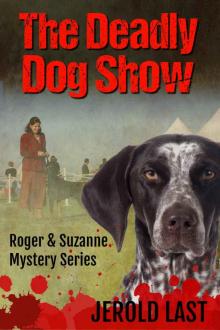 The Deadly Dog Show (Roger and Suzanne South American Mystery Series Book 6)
The Deadly Dog Show (Roger and Suzanne South American Mystery Series Book 6)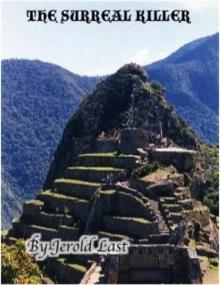 The Surreal Killer (Roger and Suzanne South American Mystery Series Book 2)
The Surreal Killer (Roger and Suzanne South American Mystery Series Book 2)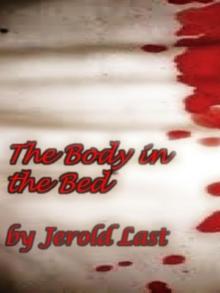 The Body in the Bed (Roger and Suzanne South American Mystery Series Book 5)
The Body in the Bed (Roger and Suzanne South American Mystery Series Book 5)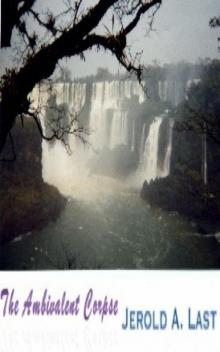 The Ambivalent Corpse (Roger and Suzanne South American Mystery Series Book 1)
The Ambivalent Corpse (Roger and Suzanne South American Mystery Series Book 1) Unbearably Deadly (Roger and Suzanne South American Mystery Series Book 9)
Unbearably Deadly (Roger and Suzanne South American Mystery Series Book 9)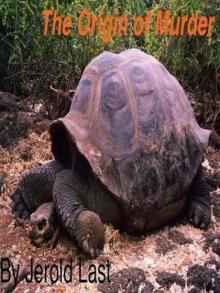 The Origin Of Murder (Roger and Suzanne South American Mystery Series Book 8)
The Origin Of Murder (Roger and Suzanne South American Mystery Series Book 8)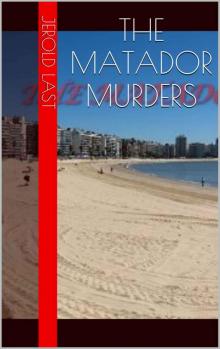 The Matador Murders (Roger and Suzanne South American Mystery Series Book 4)
The Matador Murders (Roger and Suzanne South American Mystery Series Book 4)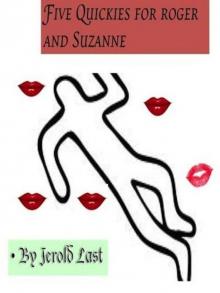 Five Quickies For Roger And Suzanne (Roger and Suzanne South American Mystery Series Book 7)
Five Quickies For Roger And Suzanne (Roger and Suzanne South American Mystery Series Book 7)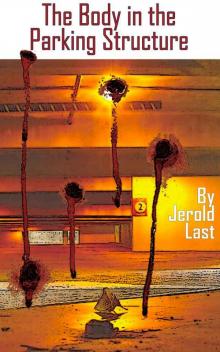 The Body in the Parking Structure (Roger and Suzanne South American Mystery Series Book 4)
The Body in the Parking Structure (Roger and Suzanne South American Mystery Series Book 4)